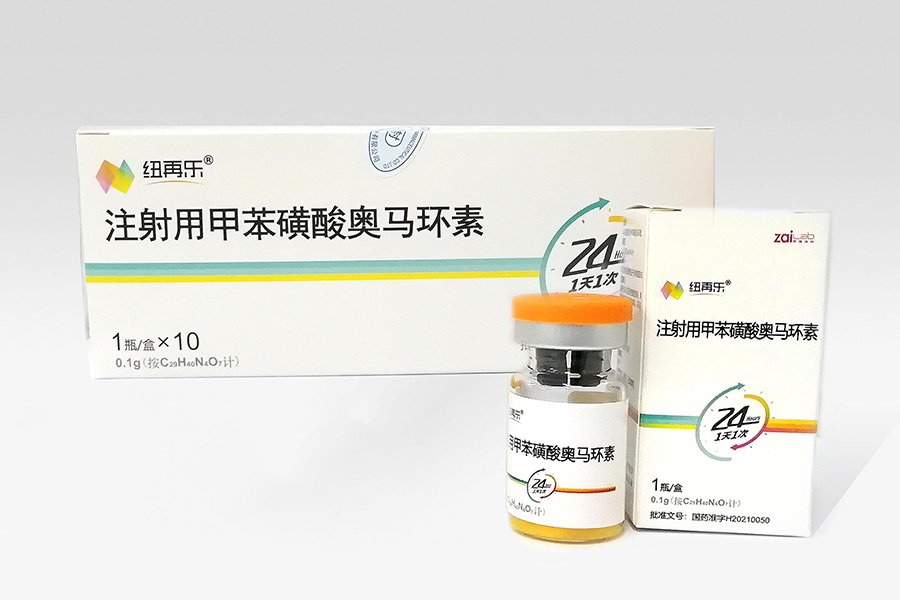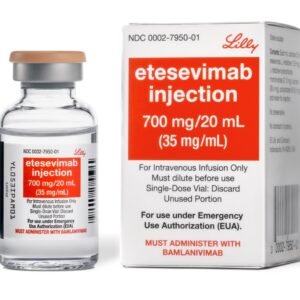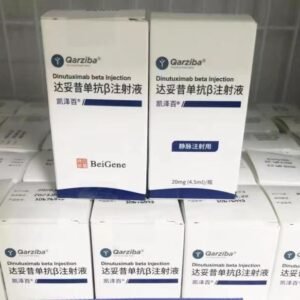Omadacycline Tosilate for Injection
Omadacycline tosylate is a product that Zai Lab introduced from Paratek* in 2017. It was launched in the United States in February 2019. On December 16, 2021, the indications of omadacycline tosylate (Neuzai) for the treatment of community-acquired bacterial pneumonia (CABP) and acute bacterial skin and skin soft structure infection (ABSSSI) were officially approved by the National Medical Products Administration (NMPA). ABSSSI is a bacterial infection with a lesion area of at least 75cm2 (the lesion area is calculated based on the measured congestion/erythema, edema or nodules and range), and the patient is also accompanied by systemic symptoms such as lymphadenopathy or fever (oral temperature ≥38℃). Common pathogens include Streptococcus pyogenes, other streptococci, and Staphylococcus aureus.
Antibacterial activity characteristics
This drug is a new tetracycline antibiotic, which is structurally modified on the basis of minocycline. It is designed to overcome bacterial resistance to existing tetracycline drugs and improve broad-spectrum antibacterial activity. According to the Sanford Fever Guidelines, aerobic Gram-positive bacteria with antibacterial activity include Enterococcus faecium, Enterococcus faecalis, VRE (±), MSSA, MRSA, Staphylococcus epidermidis, Staphylococcus lugdunensis, various streptococci (Streptococcus anthracis, Streptococcus pyogenes Group B Streptococcus, Streptococcus pneumoniae and Streptococcus viridans), Jack’s Corynebacterium, Enterobacteriaceae resistant to ceftazidime and carbapenems, such as ESBL-producing Escherichia coli, KPC enzyme-producing Escherichia coli, MBL-producing Escherichia coli and Klebsiella pneumoniae producing the corresponding enzymes, ampicillin-resistant Haemophilus influenzae, Acinetobacter (Acinetobacter baumannii), MRSA, Stenotrophomonas maltophilia, etc. It has little activity against Pseudomonas aeruginosa, Proteus Morganella and Providencia. The antibacterial spectrum is almost the same as that of tigecycline.
Pharmacokinetic characteristics and differences of tigecycline
Picture
The drug has both intravenous and oral preparations, and the bioavailability of the oral preparation is 34.5%. The protein binding rate is 20%, and the half-life is 15.5~16.8 hours. The protein binding rate of tigecycline is 71-89%, the half-life is 42%, and the blood-brain barrier permeability of tigecycline is 0. Pharmaceutical trials and clinical pharmacology show that the pharmacokinetics (PK) of omadacycline tosylate is not affected by the patient’s age, gender, liver and kidney function, etc. After entering the body, it is not metabolized and excreted from the feces. The corresponding patients do not need to adjust the dose when taking the drug. However, the dose of tigecycline needs to be reduced when the Child Pugh score is C.
Image
Recommended dose
Indications
Route of administration
Day 1
Maintenance
CAP
Intravenous
200mg (infusion over 60min)
100mg, once a day
100mg, two doses
100ng, once a day
Oral
300mg, two doses
300mg, once a day
ABSSSI
Intravenous
200mg (infusion over 60min)
100mg, once a day
100mg, two doses
100mg, once a day
Oral
450mg, qd first and second day
300mg, once a day
Image
Precautions for taking medicine
Image
The reconstituted solution of this medicine is orange or dark orange liquid. Use 100ml saline or 5% glucose. Do not use the same infusion line with drugs containing other cations such as calcium ions, magnesium ions, etc. If it is an oral preparation, fast for four hours before administration, fast for 2 hours after administration, and fast for dairy products and foods containing multivitamins for 4 hours after administration.
*(Partek Pharmaceuticals was founded in 1996 and is headquartered in Boston, Massachusetts, USA. It is a commercial-stage biopharmaceutical company focused on the development and commercialization of therapeutic drugs based on biology and tetracycline chemistry to meet critical medical needs in the treatment of infectious diseases.)
Share:
Products
Our offers
Health Classification
Let us work together to protect precious health






























